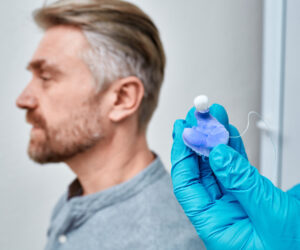
Master The Guide to Audiology as a Career
As our environments become increasingly noisy, the importance of hearing health has never been greater. From rising awareness about ear protection to the growing need

As a healthcare professional, the pursuit of expanding your skillset is not just about adding services; it’s about enhancing the quality of care you provide to your patients. In the realm of ear health, earwax removal stands as a vital service, often perceived as straightforward yet requiring significant expertise. The question many professionals face when delving into this field is whether to specialise in just one method of earwax removal or to embrace comprehensive training across multiple techniques.
Earwax removal is a nuanced procedure that requires a deft touch and an understanding of various techniques. Each method has its unique aspects and applications, making them suitable for different situations. As a healthcare professional, being proficient in these methods ensures you can provide the best care for your patients’ diverse needs.
Each of these methods has its place in earwax removal, and the choice of technique depends on the patient’s specific condition, ear anatomy, and history. As a practitioner, your ability to perform these methods skilfully not only enhances your service offerings but also ensures you can cater to each patient’s individual needs with the utmost care and safety.

In the world of earwax removal, one size does not fit all. The diversity of patient cases necessitates a broad skillset in various removal methods. Comprehensive training in earwax removal is essential, not just for versatility but also for ensuring patient safety and effective care.
Different types of earwax impaction, ear canal shapes, and existing conditions can influence the choice of earwax removal method. For instance, a patient with a very narrow ear canal may be better suited for irrigation rather than microsuction. Furthermore, certain medical histories, such as ear surgeries or eardrum perforations, dictate the avoidance of water irrigation as it can cause complications.
In some cases, a combination of methods may be required to effectively remove earwax. For example, a practitioner might need to use manual removal to loosen impacted earwax before safely suctioning it out. Being trained in multiple techniques allows for flexibility and adaptability in treatment plans, ensuring that each patient receives the most suitable and effective care.
The importance of comprehensive training in earwax removal cannot be overstated. It’s not just about mastering techniques; it’s about providing patient-centred care that adapts to the unique needs of each individual.
Being treated by a practitioner who is well-trained and experienced in various methods reassures patients of receiving high-quality care. A practitioner’s ability to offer multiple options and explain the best approach for each case enhances patient trust and satisfaction. As a healthcare provider, your commitment to thorough training reflects your dedication to the highest standards of care and safety.

Proper earwax removal is a delicate process that, if not performed correctly, can pose significant risks and complications. Inadequate training in earwax removal methods can lead to a range of adverse outcomes, making comprehensive training essential for ensuring patient safety:
The journey to becoming an effective earwax removal specialist involves more than learning a single technique. It requires an in-depth understanding of various methods, the ability to tailor approaches to individual patient needs, and the skills to navigate potential complications safely. Comprehensive training is the cornerstone of this journey, underpinning the quality of care that healthcare professionals can offer to their patients.
For healthcare professionals eager to expand their expertise in earwax removal, HCPI’s training programmes offer an opportunity to enhance your skills. Our approach encompasses all methods — irrigation, microsuction, and manual removal — ensuring that healthcare professionals are equipped with a well-rounded skill set. For more information, visit our course page or contact us to learn more.

As our environments become increasingly noisy, the importance of hearing health has never been greater. From rising awareness about ear protection to the growing need

As a healthcare professional, have you ever considered the impact that being able to take ear impressions could have on your practice? Whether you’re an